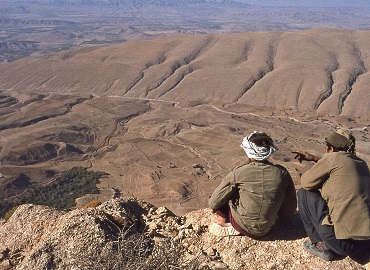
The first archaeologist to deliver a report about the site of Qaleh-i Yazdigird was Henry Rawlinson in 1839 while conducting military reconnaissance along the western border of Iran. In 1964 Ed Keall was associated with the British Institute of Persian Studies in Iran, conducting research on the pre-Islamic Iranian dynasty of the Sasanians. Using Rawlinson’s report as a guide, Keall opted to conduct an exploration of the site, with striking results.
With a curatorial position at the Royal Ontario Museum (Toronto, Canada), Keall led a Canadian team to Qaleh-i Yazdigird in 1975 and 1976, with the objective of expanding considerably the earlier probes. Through his cross-appointment affiliation with the University of Toronto, Keall was successful in receiving funding from the Social Sciences and Humanities Research Council of Canada.
In the winter of 1978-79, the Canadian program continued, but under strained circumstances because of the worsening security situation. The Iranian Revolution resulted in termination of the Canadian program in February 1979. Between 2008 and 2010, as part of a regional study, Iran’s Cultural Heritage Organization (Kermanshah branch) re-activated the Qaleh-i Yazdigird excavations, under the directorship of Yousef Moradi.


